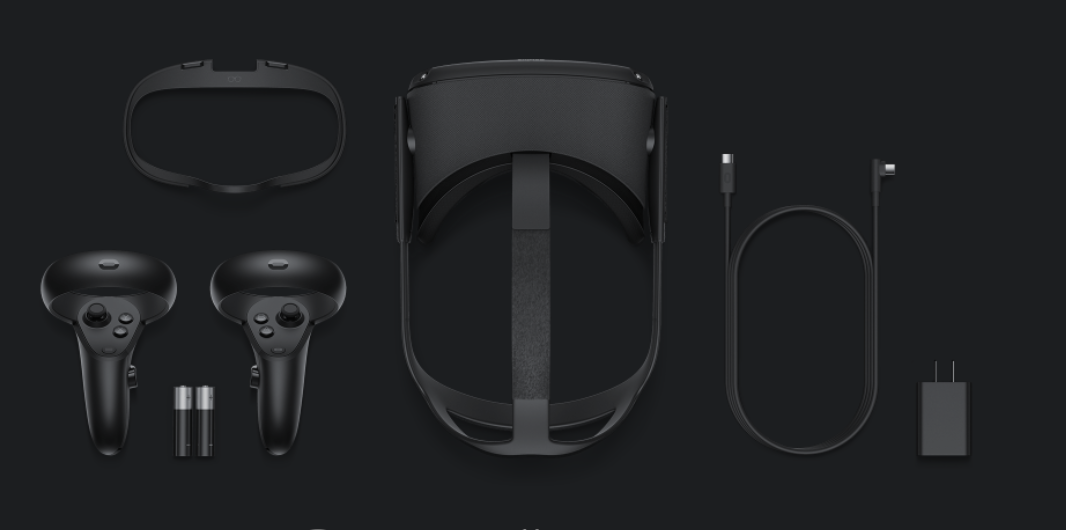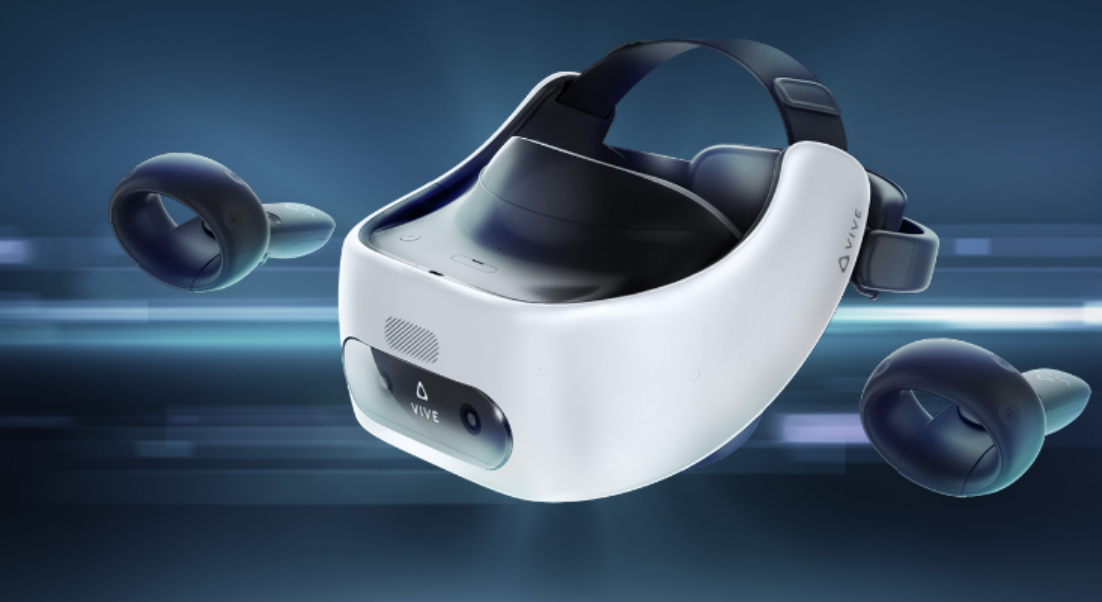Businesses have already had a chance to benefit from virtual reality technology. With the help of virtual reality gadgets, one can remotely review objects in maximum detail, perform an in-depth examination of an item of interest, and fully immerse into a particular atmosphere of an event.
The striving field of healthcare has been actively investing in VR systems as well, opening new horizons for medical research and practice. In particular, VR can be utterly efficient for studying complex medical subjects, serving as a real next-level tool for bringing up highly-qualified experts.
Nanobot has picked to review the most popular and efficient models of VR equipment that is already being used in healthcare education.
HTC Vive Pro
Vive Pro is a virtual reality helmet developed by HTC. The package doesn’t include additional joysticks and motion tracking system to the helmet. The main advantage of this particular model is its high-quality screen. The manufacturer stresses out that the product is a smart business-device.

Technical Characteristics
So, this helmet with 6DoF is equipped with the new AMOLED matrix screen. A 1440×1600 pixel oversensitive monitor is especially pleasing to look at. Vive Wireless adapter allows unbelievable image quality and a 110° view angle. The lenses provide great focus and are adjusted quite conveniently.
Integrated Vive Wireless Adapter by HTC serves as an additional sensor. It not only enhances the image smoothness but also provides feedback. The sensors set includes an accelerometer, proximity detector, gyroscope, SteamVR Tracking system, and even an IPD sensor for determining the distance between pupils.
The developers have provided HTC Vive Pro Eye — the second model of the helmet — with the ability of accurate eye tracking. This means that the helmet recognizes your eye movement and can determine the object you are concentrating on. This innovation can be implemented in a business, particularly for marketing purposes. The latest version of the VIVE Pro Eye Full Kit amounts to $1,599.00.
Utilization
The gadget is rather heavy, though it sits tightly on the head. There is, of course, a reliable strap that provides balanced weight distribution, but it doesn’t solve the problem entirely — the heaviness of the device still causes discomfort on the head. The headphones are neatly integrated into the belt itself. Though, some users reported insufficient sound transmission.
What may seem confusing is that the device is supposed to be connected to the personal computer via a cable. It seemed like an old idea in this wireless era. Nevertheless, the developers minded the convenience of their clients and added a special adapter allowing a wireless connection to the helmet. Don’t forget that the hosting computer itself must meet the requirements of the HTC VIVE Pro developers in terms of performance and video card characteristics.
Regarding the drawbacks, it is important to note that the head is going to get sweaty quite fast due to the synthetic lining materials. This causes a certain level of discomfort and should be taken into consideration.
As for the positives of the device, the focus distance adjustment is worthy of special mention. This feature is especially appreciated by the people with sight issues because they can use the gadget without their glasses and see a sharp image. The distance between the pupils is adjustable as well. The smooth focus degree calibration guarantees a beautifully clear picture.
If the device is connected to the personal computer — the short battery life problem quickly solves itself, which is a considerable advantage in case of more prolonged use.
Employment in Medicine & Medical Education
HTC Vive and Vive Pro are promisingly used to implement advanced medical capacities by New Zealand’s Virtual Medical Coaching (VMC Suite X-Ray Trainer project for studying the specifics of x-ray, MRI, CT, Ultrasound, etc. hands-on), Canada’s VR Medical Training Centre governed by the Queen’s University (a complex facility for med education through Vive), and Taiwan’s Taipei Medical University (a large VR anatomy lab project).
Pricing
The company’s website says that the complete package of VIVE PRO is available for $1,399. But it would be best if you did not forget that the whole expense will also include purchasing a personal computer capable of hosting the helmet.
Oculus Quest
Oculus Quest is positioning itself as the “first gaming system «all-in-one» for VR.” This is an entirely autonomous helmet for virtual reality reconstruction from the Oculus company. You don’t have to have a personal computer or any other particular external tracking system for this device to determine a user’s head, hands, legs, and body position in the space. The suite also contains a couple of controllers that run on AA Mignon batteries.

Technical Characteristics
Two OLED-screens with the 1440×1600 pixels resolution playback the image with the combined resolution of 2880×1600 pixels.
The entire system runs on the Quest SnapDragon 835 processor by Qualcomm. It’s worth mentioning that the device doesn’t overheat, while the processing power has indeed increased a notch. The gadget’s screen doesn’t have any special features and is quite simple; its price is somewhat around $500. Overall, what is most important is that the screen is pleasant to the eye.
Controllers also received some positive feedback from satisfied customers. You can bend and rotate your palms around the room, and the sensors will keep track of all that motion disregarding the complexity of the twists. The joysticks’ interaction system is pretty well-arranged. You can experiment with different virtual objects — juggle an object between the hands or throw it up in the air and catch it back, for example. The controllers sit comfortably in the hands, the simple, lightweight devices cause no discomfort whatsoever and are worthy of compliments only.
Although they serve their purpose well, the power solution is not on the bright side. The controllers run on batteries, which is not very convenient because a full battery charge doesn’t last for long, so you have to keep a couple of spare ones in order not to run out of power in the middle of whatever you were doing.
Another drawback of this device is the inability to use a memory card. It complicates things a little, though you still have an option of connecting via Wi-Fi among the other features, so this is neglectable.
Utilization
The Oculus Quest helmet fixes comfortably on the head. It causes no discomfort in terms of the heaviness of the whole device, though the strapping could be more comfortable. The manufacturers didn’t give much attention to hygiene — the covering materials don’t support cleaning. And if you intend to use it for corporate purposes, that means a lot of people getting the helmet on and off all day long. This problem seems to be especially acute since special cases for the Oculus Quest have started to appear on the market recently.
The lenses of the headset are a completely different topic. There are several layers of lens calibration and also the adjustable distance between the pupils of a user. People with sight issues will find it both pleasing and troubling — the helmet itself is quite comfortable, and even those with the thickest spectacle frames will be able to put it on. At the same time, the focus distance calibration is entirely absent.
Applications
Using applications from the official Oculus Store has a range of peculiarities and there are no other ways of getting them. Applications have to be installed on each device separately, which is not convenient for the managers of companies that make mass usage of them in their business. The software itself works just fine, no complaints have been reported from there.
Employment in Medicine & Medical Education
Oculus Quest is successfully promoted by Karuna Labs and Osso VR as an advanced tool for pain management treatment and surgical training to be employed by global healthcare facilities. The existing capabilities are already brimming with potential, allowing for quite precise surgical simulations to help boost students’ qualification faster.
VR-based medical educational experiences are also currently being integrated by specialists at Stanford University School of Medicine, University of Maryland, and are considered by many leading med facilities as well.
Pricing
The official website of the Oculus Quest specifies the price based on internal memory. This way, a device with 64GB of internal memory will cost you $399. If you need to double that about 128GB, it will cost you $499.
VIVE Focus Plus
VIVE Focus Plus is a fully autonomous device with the ability of complete motion tracking achieved using two controllers. This device works on itself without a hosting personal computer.

Technical Characteristics
VIVE Focus Plus has a 835 Qualcomm processor, the same one as the Oculus Quest. The characteristics of these two headsets are quite similar to each other, though some say that VIVE Focus Plus is falling behind just a tiny bit in terms of processing power.
The device is equipped with a 2880×1600 screen with a 110° view angle. Screen pixel density is 615 PPI, which means a high-accuracy image representation.
The software VRidge by Rift Cat is worthy of mentioning. Vive Focus Plus has the ability of wireless connection to a personal computer for transferring visual material. Not all VR-systems present a user with that function.
Utilization
The device has quite an attractive design solution. The construction is comfortable to wear and allows long-time usage. Though the experts are not congruent on the helmet’s convenience. Some claim that it is rather light and sits tightly on the head; others argue that it has a poor weight distribution, leading to a feeling of discomfort.
It should be noted that the developers haven’t done much about one of the main drawbacks in the previous version of the headset. The strap on the helmet is made of fragile plastic that wears off and breaks quicker than you would expect it to. The helmet might be inconvenient for commercial use, where you have numerous people putting it on and off every day. However, HTC Vive is aware of the problem and is willing to repair the headsets operatively in case it breaks.
As for controllers, they are quite massive, not too comfortable in the hands. The helmet has a bunch of buttons requiring some adaptation. Most of the experts have concluded that 18 buttons on each controller are just too much. The touchpad partly mitigates the situation with the joysticks.
Regarding the image quality — VIVE Focus Plus is worthy of high praise only. The sharpness on the picture is top-notch. The device creates the most comfortable environment for the eyes owing to the renovated casing and the Fresnel lenses.
The pupil’s distance gauge is adjustable, which is unfortunately not the case for the focus distance. This means that people with sight issues will have to use the helmet on top of their glasses. However, wearing a headset and glasses together is surprisingly convenient, so it is not that much of a problem after all.
Employment in Medicine & Medical Education
Bright minds from Oxford put Vive Focus Plus in the core of a new advanced VR training app LIFE focused on accessible yet insightful profiled education for nurses and doctors. A SimforHealth team has presented their variation of virtual environment for professional, in-depth nurse training as well. This standalone VR piece is showing great results already, being customized for medical training by some of the smartest experts in the industry.
Applications
The applications for VIVE Focus Plus can be purchased from the official VIVEport store. But you can get around it with the amount of desire needed.
Comparing the device with the Oculus Quest in terms of downloading, it is apparent that the VIVE Focus Plus makes the process much easier for the user. HTC has an accessible system allowing for simpler unofficial applications downloading. It is especially beneficial for the B2C category of the market, where creating specific personalized content is often the case for many companies.
Pricing
You can purchase a VIVE Focus Plus virtual reality helmet for $799.
Choosing a VR-System

The VR-market has been pretty decent in recent years, and it seems that this trend is only going to ratchet up the momentum. But if we are talking about B2B implementation, there are several essential aspects to consider while deciding on the right VR-system.
Don’t expect some cheap general-purpose device to fulfill all of your expectations when it comes to its use in professional med training. Basically, a standard VR-helmet will do just fine with a regular 360° video. Still, to use a device under more extreme conditions, you will require a piece of technology supporting more complicated functions. Also, the risks are high when you choose a simpler VR-set — having spent a substantial sum of money on an improper system; a company will fail to meet the objectives and lose the finances.
You should not forget about maintenance as well. A system with more complex functionality has its technical peculiarities that should not be disregarded. Consultation of a specialist may be required in case of both setting up a VR-system and if it’s broken. So this is one of the aspects to pay attention to before purchasing an expensive virtual reality device.
Download Free eBook “How much does Medical Animation explainer cost?”
- Should you choose Freelancer or Studio as a medical animation provider?
- What is the COST structure?
- Prepare BETTER for the project
- How to SAVE the budget?
- How to AVOID common mistakes?
});

The post Best Helmets for Medical VR Education appeared first on Nanobot Medical Animation Studio.






